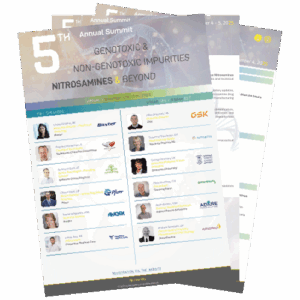Join industry leaders, regulatory experts and scientific innovators at the 5th Genotoxic and Non-Genotoxic Impurities: Nitrosamines and Beyond Summit, a premier two-day virtual event focused on the latest developments, regulatory expectations and technical challenges in impurity control.
Day 1 delves deep into the evolving landscape of nitrosamine impurities, featuring expert-led sessions on global regulatory updates, risk assessment strategies, toxicological evaluation and advanced analytical techniques. Discussions will cover nitrosamine drug substance-related impurities (NDSRIs), predictive assessments using in silico tools and the impact of formulation, manufacturing and stability on impurity formation.
Day 2 expands the focus to genotoxic and non-genotoxic impurities, highlighting computational tools for early hazard identification, common profiling pitfalls and unique challenges in biologics and medical devices. With dedicated sessions on qualification and regulatory perspectives, the summit provides a comprehensive view on managing both mutagenic and non-mutagenic impurity risks across the pharmaceutical lifecycle.






















































